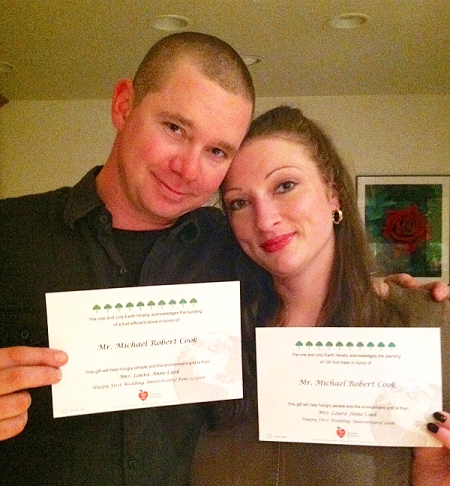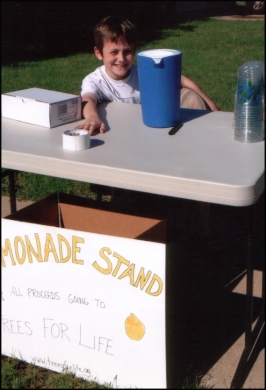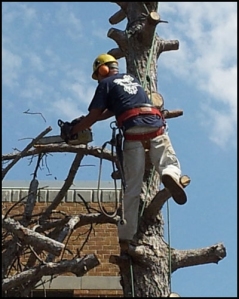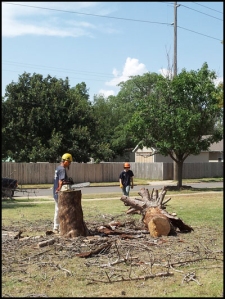Photo courtesy of Shanna K. Patterson
Mike and Laura Cook, Ventura, CA, with their original certificates in 2006
Mike and Laura Cook honor each other every year on their wedding anniversary by planting 100 trees through Trees for Life. Here’s their story as shared by Laura:
“For our wedding anniversary each year, we purchase 100 fruit trees from Trees For Life. We understand fully that there are several amazing ecologically supportive, disease/hunger fighting projects being carried out by Trees For Life. Our monies go to Trees For Life and are spent as only Trees For Life could. Each project is beyond worthy, but this married couple has found a way for romance to be held up by disease fighting, hunger abating, ecology sustaining, and so much more. These projects are done around the globe where it is needed most. We will likely never visit a fruit tree that is providing shade and food while stabilizing a river’s bank with its roots. But each year, we buy another 100 (trees). And around our own neighborhood in this world, we can gaze out at tree topped vistas to try to see if we could understand what our hundreds of trees amount to if they were grouped. It is very romantic. And every time I have corresponded with someone working for Trees For Life, it has been a pleasure and an honor. Their causes are not easy, but they are achievable and powerful in their beautiful simplicity. Please support them, there is no better gift to give to someone of importance!”














